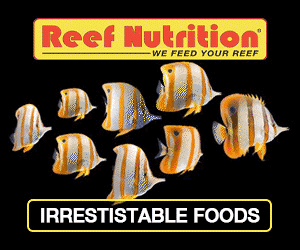 Piebald seahorses are such a captivating specimen that they seem out of this world. Perhaps one of the coolest variations within the Lined Seahorse species! They are a color morph branching from Hippocampus erectus. This specific morph is achieved through selective breeding, much like designer clownfish. The seahorse you see pictured here is a specimen I received from my friend Alyssa Gabriel. She is the cofounder of Seahorse Savvy. Alyssa, and her fiancé Kyle, have been breeding seahorses for a few years now and have perfected their method down to a T. At any given time they will have around 4,000 seahorses. By matching certain seahorses and bonding them together, Alyssa was able to produce the beauties you see before you. You can check out more information about their work here.
Piebald seahorses are such a captivating specimen that they seem out of this world. Perhaps one of the coolest variations within the Lined Seahorse species! They are a color morph branching from Hippocampus erectus. This specific morph is achieved through selective breeding, much like designer clownfish. The seahorse you see pictured here is a specimen I received from my friend Alyssa Gabriel. She is the cofounder of Seahorse Savvy. Alyssa, and her fiancé Kyle, have been breeding seahorses for a few years now and have perfected their method down to a T. At any given time they will have around 4,000 seahorses. By matching certain seahorses and bonding them together, Alyssa was able to produce the beauties you see before you. You can check out more information about their work here.

One of the biggest concerns when producing color morphs in seahorses is that the unique color you worked so hard to achieve will change to a common drab color. It can be so frustrating to watch a beautiful robust red seahorse change to a muddy brown for no apparent reason. Since seahorses are masters of camouflage, you should try to NOT keep a brightly colored seahorse in a darker decorated tank. Sometimes though seahorses just do whatever the heck they feel like doing. A few tricks you can attempt to prevent this is to: add brightly colored décor or separate the seahorses by color. This can encourage them to stay diversely colored. However, sometimes there is nothing you can to do to stop the unfortunate color change.

Good news, however, is that this is not the case for the Piebald seahorses. These colors are here to stay because they were bred from a wild pair of seahorses that displayed the Piebald gene.
This Piebald gene Therefore through this selective breeding, the coloration of the offspring is more permanent.
The selective breeding of seahorses has been around for a while now. Even the Piebald design has made its way into the trade once or twice before. Besides its exquisite ghost-like look, another appeal to its white coloration is that it is similar in design to the elusive and hard to obtain Hippocampus zebra. H. zebra is a rare deep-water species that has made its way into the trade only a handful of times.

When I was an aquarist at the Long Island Aquarium, I was lucky enough to have one Piebald on exhibit. It captivated guests and myself. It was the perfect contrast to the other seahorses on display. I would hear people say things like “is that a real seahorse?” and “that one really stands out.” If you ever have the chance to own one of these beautiful seahorses you will not be disappointed!










Great article! Seahorse Savvy is awesome! Their diverse selective breeding program always provides beautiful, new captive bred seahorses to the hobby. Many people have been disappointed by the piebald coloration disappearing over time, and I was under the impression it was a recessive gene, unlikely to be carried on. What wonderful news that these obstacles have been overcome by these terrific breeders!